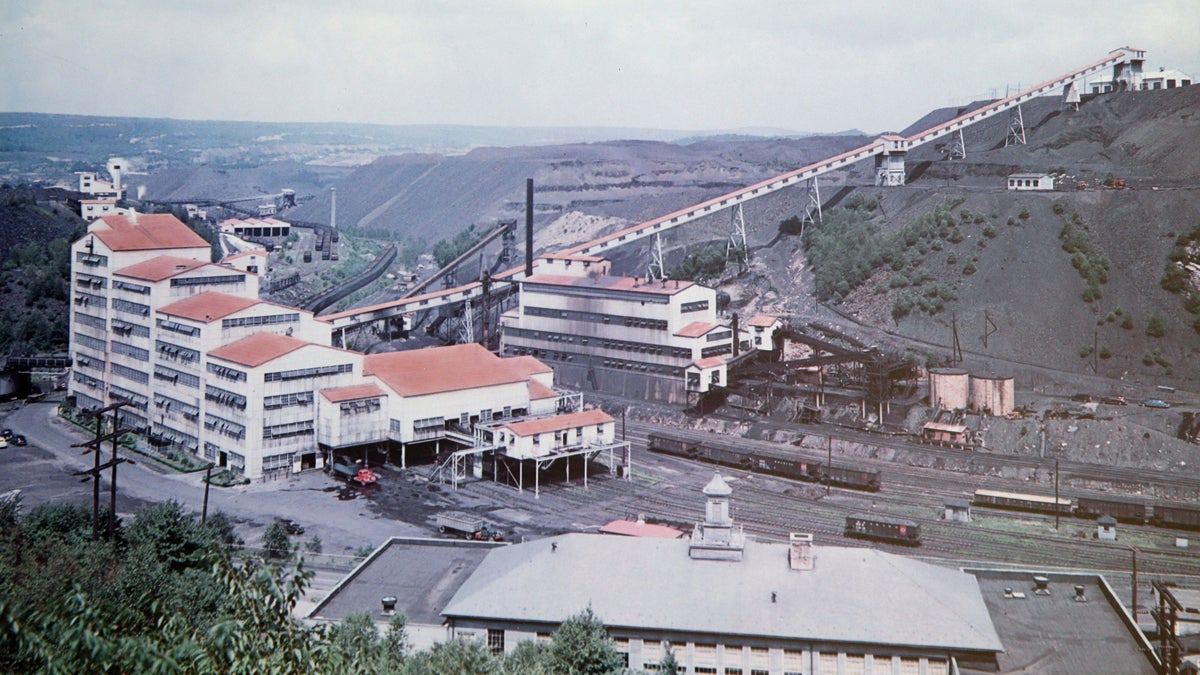State might intervene in another distressed Pennsylvania coal town

This undated photo provided by Reading Anthracite on April 29, 2015 shows the St. Nicholas Coal Breaker in Mahanoy City, Pa. In the early 20th century, St. Nicholas opened as the crown jewel of a relatively safer, more modern anthracite industry. The breaker and its twin at Locus Summit operated around the clock to meet the nation's dwindling but still substantial need for anthracite. (Reading Anthracite via AP)
The population’s been dwindling for more than 100 years in Mahanoy City, Schuylkill County.
But the borough’s decline recently pushed government officials there to take an unprecedented step. They want the state to intervene through Pennsylvania’s Act 47 for distressed municipalities, mainly because of the enhanced taxing power the program affords, says Borough Manager Daniel Lynch.
“There aren’t many boroughs where most people’s homes are worth less than the cars they drive,” says Lynch.
The root causes of financial struggles in Mahanoy are similar to many other Act 47 towns.
Mahanoy’s population peaked more than a century ago at nearly 16,000 people, four times the number living there now. It never recovered after the coal industry collapsed. The borough’s also getting stiffed on taxes by 20 percent of property owners, even though they’d be paying on values that haven’t been updated in nearly two decades.
That’s left Mahanoy’s capital reserve nearly empty, even though the government’s responsibility to maintain roads, bridges and other infrastructure hasn’t diminished along with its resources (Lynch estimates emergent repairs at $1.5 million). The municipality’s required annual payment to its police pension fund continues to grow as well, according to a letter Lynch sent to the state.
Short-term significance?
There were a few things that happened, though, during the past several years that helped push Mahanoy’s long-developing financial problems to the point of crisis.
Fires and degradation forced more than $100,000 in emergency demolitions in 2012 and 2013. The police pension payment grew from zero in 2010 to nearly $70,000 in 2015, according to Lynch.
Lynch also notes the borough’s one of at least 10 municipalities who’ve cried foul against Municipal Energy Managers with little hope of reclaiming money given to the now-bankrupt consultancy. Local officials thought the cash was going to PPL to buy borough streetlights as part of a savings scheme advanced by MEM. Other coal region communities including Scranton, Wilkes-Barre, Hazleton and West Hazleton did business with the company, with no ill effects. But the ordeal cost Mahanoy $289,000 (more than 25 percent of its annual budget), according to a report in The Times-News.
The St. Nicholas Coal Breaker was demolished last year, but that had no fiscal impact, according to Pennsylvania Economy League consultant Joe Boyle.
“It was a symbol of the industry that drove the area, but hadn’t operated in years,” Boyle says.
What’s now?
Lynch says he’s been talking to DCED since 2014 about the borough’s financial troubles. Officials there made some last ditch efforts at an independent fix. They refinanced some debt and stepped up attempts to collect sanitation debt, but that didn’t yield the desired results, Lynch says.
So in November, Boyle started examining Mahanoy’s finances through DCED’s Early Intervention Program. EIP’s meant for municipalities that are struggling financially, but still capable of providing basic services.
They found Mahanoy facing an emergency situation: being unable to cover payroll and debt repayments as its unpaid bills swelled to more than $500,000, about half the borough’s $1 million budget, according to Boyle.
Boyle says that constituted dire enough circumstances to virtually skip EIP for full-fledged Act 47 intervention.
What’s next?
A public hearing about Mahanoy City going into Act 47 is scheduled for Thursday, Jan. 21.
After that, the state Department of Community & Economic Development has 30 days to decide whether a municipality’s financially unstable enough to warrant a formal designation of distressed status and entry into the Act 47 program.
Editor’s note: This story was updated to add details about Mahanoy’s police pension payment.
WHYY is your source for fact-based, in-depth journalism and information. As a nonprofit organization, we rely on financial support from readers like you. Please give today.



